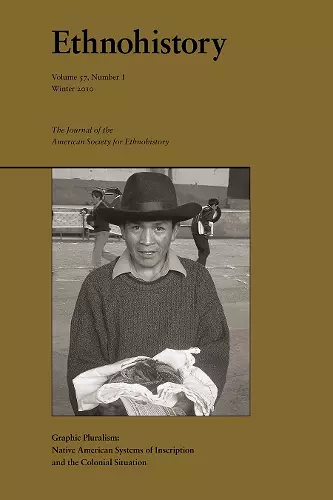Graphic Pluralism
Format:Paperback
Publisher:Duke University Press
Published:8th Feb '10
Currently unavailable, and unfortunately no date known when it will be back

This special issue of Ethnohistory examines how Amerindian graphic codes interacted with alphabetic writing in the colonial polities of the Americas. Expanding on the common understanding of writing, the issue introduces the term graphic pluralism to describe situations in which multiple systems of inscription were used in the same linguistic community. The contributors’ studies of graphic pluralism shed light on colonial interactions in North America, Mesoamerica, and South America, and on how both alphabets and indigenous systems helped form the basis of colonial control and resistance.
One contributor shows how the Spanish colonial powers and the traditional Maya nobility in the Yucatán struggled over alphabetic literacy and the continued use of hieroglyphics. Another contributor documents how the Natick speakers of Martha’s Vineyard adopted alphabetic literacy for their own purposes in the seventeenth and eighteenth centuries, incorporating writing as a tool of traditional governance. In another article, a Spanish translation is compared to the original Nahua text to show how the two versions provide very different views of the Spanish conquest of the city-state of Mexico-Tenochtitlán. Yet another contributor examines how competing language ideologies in the Andes were used to characterize khipus (Andean knotted strings) and alphabetic script.
ISBN: 9780822367253
Dimensions: unknown
Weight: unknown
176 pages